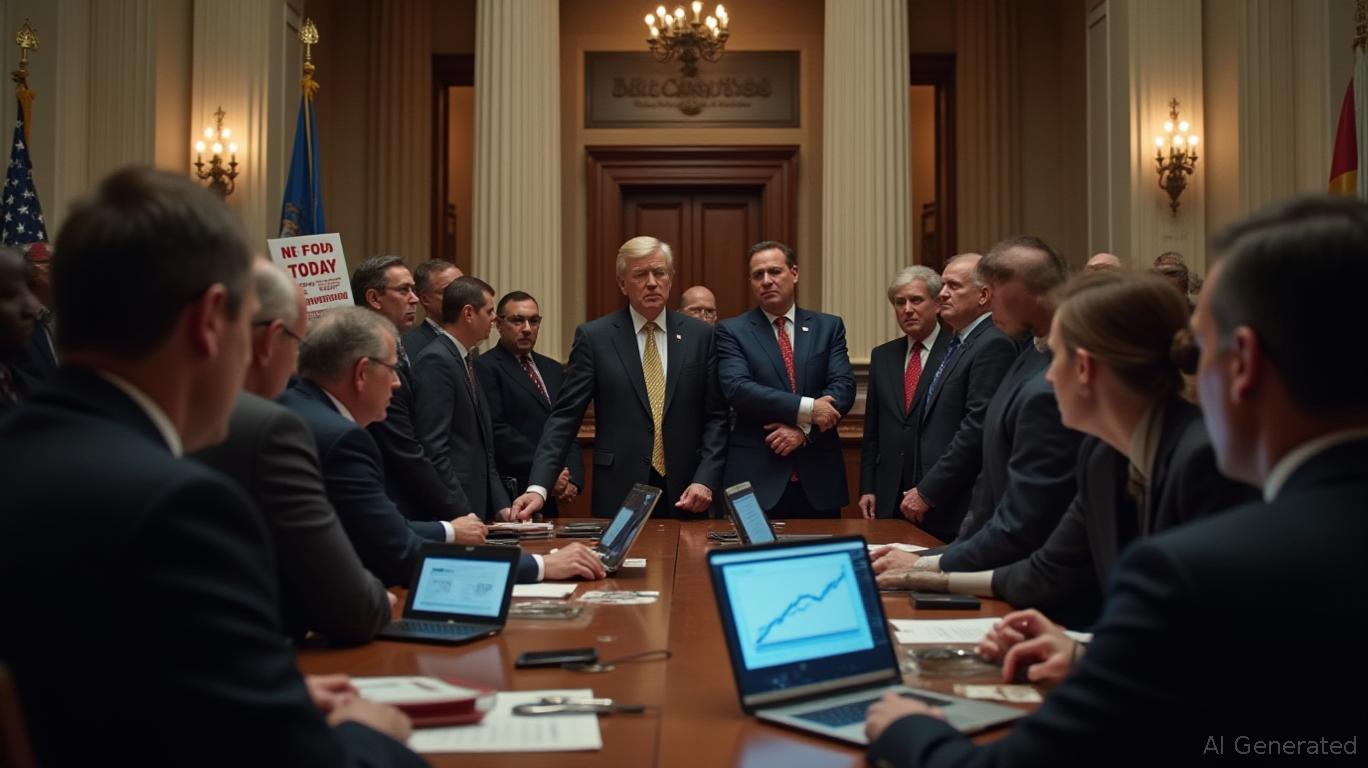Fed's Internal Debate on Rate Reductions Heats Up as Miran Advocates for Bold Easing
- Fed Governor Miran advocates for 50-basis-point rate cuts, dissenting from recent FOMC decisions. - Miran warns of "overly restrictive" policy risks, contrasting with Powell's cautious December rate cut stance. - Global central banks like Indonesia and India also consider rate cuts, signaling potential 2025 easing trends. - Rare back-to-back dissents highlight Fed's internal debate over easing pace amid fragile labor market.
Fed Governor Miran Pushes for Deeper Rate Cuts as Internal Disagreements and Global Easing Persist
Stephen Miran, a member of the Federal Reserve Board, has become a prominent supporter of more substantial interest rate reductions, taking a more assertive approach to monetary policy than the recent actions of the Federal Open Market Committee (FOMC). As a relatively new addition to the board, Miran voted against the FOMC’s October decision to lower rates by 25 basis points, instead advocating for a 50-basis-point cut. He also joined Kansas City Fed President Jeffrey Schmid in dissent, though Schmid argued for keeping rates steady, according to

Miran’s case is built on concerns that current monetary policy is excessively tight. In a recent
The Federal Reserve’s measured strategy is influenced by ongoing economic challenges, such as a cooling job market and inconsistent inflation figures. Yet, Miran’s opposition points to intensifying debate within the Fed about how quickly to ease policy. It’s unusual for a governor to dissent in consecutive meetings, as most typically return to consensus after one dissent, as Barron’s observed. Miran’s persistent stance highlights his conviction that the Fed should act decisively to prevent economic stagnation.
Central banks worldwide are also weighing rate reductions, providing a broader backdrop for the Fed’s discussions. In Indonesia, Bank Indonesia Governor Perry Warjiyo has indicated that further cuts are possible, though their timing will depend on the rupiah’s stability and the impact of previous moves, as reported by
The Fed’s decision in December will depend on fresh economic indicators, including jobs data and inflation reports. Observers will be monitoring whether Miran’s call for bolder rate reductions gains support among FOMC members. For now, the central bank faces the challenge of curbing inflation while fostering economic growth in the midst of a fragile labor market.
Disclaimer: The content of this article solely reflects the author's opinion and does not represent the platform in any capacity. This article is not intended to serve as a reference for making investment decisions.
You may also like
Partisan Stalemate Results in $14 Billion Losses and 42 Million Facing Hunger as Shutdown Hits 35 Days
- U.S. government shutdown hits 35 days, matching historical record as partisan gridlock disrupts services for millions. - 42 million Americans face food aid delays under SNAP, with states using emergency funds amid federal funding disputes. - Economy risks $7B-$14B loss as shutdown extends, with GDP growth projected to drop 1-2% depending on duration. - Air traffic delays and unpaid federal workers highlight human costs, while political leaders blame each other for stalemate. - Trump administration oppose

Bitcoin Updates: Ambiguous Fed Rate Direction Triggers Crypto Sell-Off, $1.2 Billion Liquidated
- Crypto markets saw $1.2B in liquidations as Bitcoin and Ethereum dropped 3% amid macroeconomic uncertainty and trader panic. - Top exchanges like Hyperliquid and HTX recorded massive losses, with high-profile traders suffering $15M-$33M in single-day wipeouts. - Fed's ambiguous rate-cut signals and Trump-Xi meeting failed to stabilize prices, while Coinbase's negative premium index highlighted U.S. selling pressure. - Despite 3-month lows for ETH and altcoins, analysts like Nick Ruck suggest Fed policy s

Ethereum News Update: Crucial Support and Resistance Clash for Ethereum: Bulls and Bears Face Off in Intense Showdown
- Ethereum's price hovers near $3,600–$3,750 support, with bulls targeting $4,000+ and bears warning of a $3,300 drop. - Technical indicators show neutral-to-bearish momentum, while on-chain data highlights $165B reserves and stablecoin strength. - A Binance 30,000 ETH order and Fed policy signals could drive volatility, with $4,000+ potentially unlocking $5,000–$6,000. - Key resistance at $4,100–$4,250 remains intact since mid-2025, requiring a breakout to confirm bullish momentum.

BCH Drops 1.9% on November 4 as Weekly and Monthly Declines Worsen
- Bitcoin Cash (BCH) fell 1.9% on Nov 4, with 8.3% weekly and 7.25% monthly losses, contrasting a 14.22% annual gain. - Technical indicators show mixed signals: oversold RSI hints at potential rebounds, but bearish MACD divergence suggests lingering downward momentum. - A backtest seeking 15%+ BCH spikes since 2022 failed due to no historical matches, prompting analysts to propose lower thresholds or alternative triggers like volume surges.